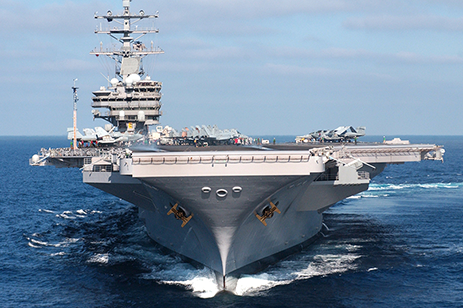
Achieving a single unified communications structure across the naval force to generate a common operating picture and improve situational awareness is highly dependent on the interoperability of tactical data link (TDL) systems. As navies move towards greater interoperability, challenges arise in ensuring support for an increasing number of tactical data link standards in use. And, with tactical data link standards constantly evolving, system integration can increase costs, program risk, and time to deployment.
The tactical data link system challenges created by stove-piped solutions that are unable to communicate with each other can often be alleviated using plug-and-play alternatives. These off-the-shelf alternatives can significantly increase interoperability while reducing training and maintenance costs.
The Benefits of COTS Tactical Data Link Systems
Commercial off-the-shelf (COTS) solutions simplify integration and assure interoperability by eliminating the need for extensive custom software development at the integration stage, which in turn accelerates time to deployment. What’s more, they provide the latest and greatest capabilities out of the box with clear upgrade and maintenance paths that streamline future tactical data link revisions and new standards implementation.
Where custom tactical data link integration may take years to complete, integrating field-proven, off-the-shelf solutions with existing and developmental naval communications systems can be achieved in months.
Developed by specialists with deep expertise in communications technologies, tactical data link standards, and military operational requirements, as well as a vested interest in staying current with standards, off-the-shelf systems are critical for successful tactical data link integration and interoperability.
Addressing Indirect Costs of Custom Integration
Indirect challenges that result from integration are also minimized. Training programs for field-proven, COTS systems leverage the lessons learned by the supplier from previous applications. As a result, the supplier can provide truly complete training for all personnel that will be operating the system. Structured properly, the training will address the operational requirements of the system itself and ensure that personnel understand how the system interoperates with systems based on other tactical data link standards.
In cases where custom tactical data link systems are adopted, training times can expand disproportionately due to the number of different pieces of training required. On naval platforms, for example, a single tactical data link requires training for technicians, operators, and communications personnel on a variety of different subjects related to the data link. When multiple tactical data links are used, the costs and requirements only multiply.
What COTS Tactical Data Link Solutions Are Available Today?
To address military organizations’ advanced tactical data link system needs, suppliers must be able to provide standards-based, high-fidelity, multi-link tactical data link solutions that improve tactical communications, reduce the time, risk, and expense of integration, alleviate interoperability issues, and lower lifecycle maintenance costs for military and prime contractor customers. These solutions must be able to supply efficient network configuration, management, and simulation for operators.
Tactical data link gateways must support multiple standards and link types, as well as intuitive testing and training solutions.
Fortunately, Curtiss-Wright is one of the few vendors that carry solutions that address all the above, from data link translators and support systems to terminal housing cases. Learn more about the evolution of tactical data link standards, their integration challenges, and which specific solutions address these challenges by reading our white paper Simplifying TDL Integration on Naval Platforms.